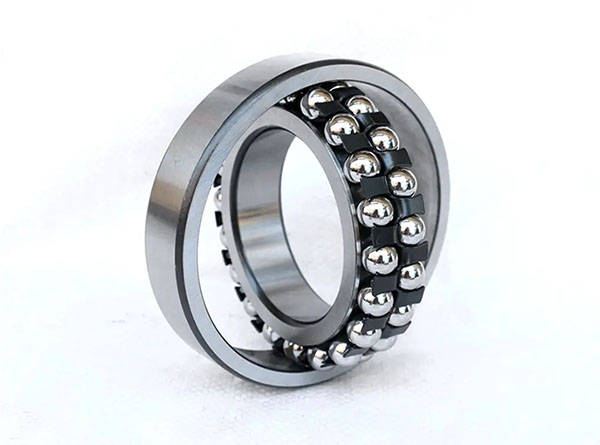Historical development
In the early form of linear motion
bearings, a row of wooden rods were placed under a row of prying plates. Modern linear motion bearings use the same working principle, except that sometimes balls are used instead of rollers. The simplest rotating bearing is a sleeve bearing, which is just a bushing clamped between the wheel and the axle. This design was then replaced by rolling bearings, that is, many cylindrical rollers were used to replace the original bushing, and each rolling element was like a separate wheel.
An early example of a ball bearing was found on an ancient Roman ship built in 40 B.C. found in Lake nano, Italy: a wooden ball bearing was used to support a rotating table top. It is said that Leonardo da Vinci once described a ball bearing around 1500. Among the various immature factors of
ball bearings, a very important point is that the balls will collide, causing additional friction. But this can be prevented by placing the balls in small cages. In the 17th century, Galileo first described the ball bearing of "cage ball". At the end of the 17th century, C. wallow of England designed and manufactured ball bearings, which were put on the mail car for trial use, and P. worth of England obtained the patent for ball bearings. The earliest practical rolling bearing with cage was invented by watchmaker johnharrison in 1760 to make H3 chronometer. At the end of the 18th century, German H.R. Hertz published a paper on contact stress of ball bearings. On the basis of Hertz 'achievements, R. striebeck of Germany and a. palmgren of Sweden have carried out a large number of tests, which have contributed to the development of the design theory and fatigue life calculation of rolling bearings. Subsequently, N.P. Petrov of Russia applied Newton's law of viscosity to calculate the bearing friction. The first patent on the ball groove was obtained by philipvaughan of camason in 1794.
In 1883, friedrichfisher put forward the idea of using suitable production machines to grind steel balls with the same size and accurate roundness, which laid the foundation of the bearing industry. O. Renault of England made a mathematical analysis of Thor's discovery and derived the Renault equation, which laid the foundation of hydrodynamic lubrication theory.
Bearing classification
Tapered
roller bearings are separable bearings, and both the inner and outer rings of the bearing have tapered raceways. This type of bearing is divided into different structural types such as single-row, double-row and four-row tapered roller bearings according to the number of rows of rollers installed. Single row tapered roller bearings can withstand radial loads and axial loads in one direction. When the bearing is subjected to radial load, an axial component force will be generated, so when another bearing that can withstand axial force in the opposite direction is needed to balance it.
The ability of a single row tapered roller bearing to withstand axial loads depends on the contact angle, that is, the angle of the outer ring raceway. The larger the angle, the greater the axial load capacity. The most used tapered roller bearings are single row tapered roller bearings. In the front wheel hub of the car, a small-sized double-row tapered roller bearing is used. Four-row tapered roller bearings are used in heavy-duty machines such as large cold and hot rolling mills.
Deep Groove Ball Bearings are inseparable bearings. The inner and outer raceways are in the form of deep grooves. They are mainly used to bear radial loads. However, when the radial clearance of the bearing is increased, it has a certain performance of
Angular Contact Ball Bearings and can withstand radial loads. , Axial combined load. It can also be used to bear pure axial load when the rotation speed is high and it is not suitable to use
Thrust Ball Bearings
1. Open base deep groove ball bearing (as shown in Figure 1)
This type of bearing has no special requirements for installation and sealing, and is widely used in various types of machinery.
2. Z, 2Z type with dust cover on single and double sides (picture 2); single and double sides with noncontact sealing ring RZ, 2RZ type (picture 3);Single and double-sided with contact seal ring RS, 2RS type (as shown in Figure 4)
This type of bearing has been filled with an appropriate amount of grease during manufacture, and does not need to be cleaned and greased during installation. Grease has anti-rust and sealing properties. This type of bearing can be matched with various machinery, especially suitable for the environment with poor environment and the need for the bearing itself to have a sealing function.




 Bearing is an important component in modern mechanical equipment. Its main function is to support the rotating body of the machine, reduce the friction coefficient during its movement, and ensure its rotation accuracy.
Bearing is an important component in modern mechanical equipment. Its main function is to support the rotating body of the machine, reduce the friction coefficient during its movement, and ensure its rotation accuracy.